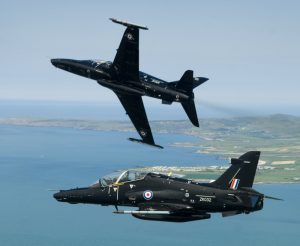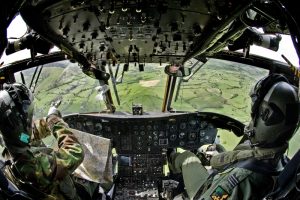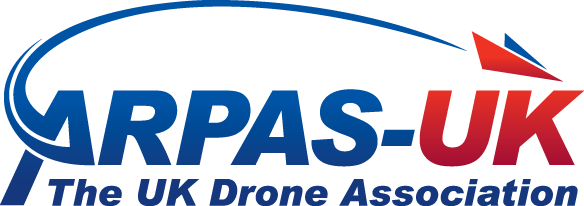Whether you are flying your drone for fun or profit, the need to fly safely and legally is often discussed. Height limits and airspace restrictions are set out in the Drone Code for all to follow and doing so will help to avoid conflict with manned aircraft and the risks that this poses. Generally speaking, civilian manned aircraft will operate over the 400ft ceiling applied to UAV flights and so you would think that observance of these limits would be sufficient to keep the airspace safe for all.
However, when carrying out essential training for operations, military aircraft have a need to fly beneath this 400ft limit, and sometimes as low as the ground in the case of helicopters taking off and landing. Collision with drones at these low heights could have disastrous consequences. These low flight exercises can take place any time of day or night, in any weather and in any location so it is something that all pilots need to be aware of, not just if you’re near an airfield or in a known low flying zone.
Ask – Look – Listen
The RAF Safety Centre have suggested several considerations that drone pilots can use to help reduce the risk of collision.
Ask
In addition to always flying in accordance with the drone code, pilots can call the freephone number below (between 0700-2000 Mon – Thu & 0700-1500 Fri). They can also be emailed.
| 0800 515 544 SWK-MAMCLFCOORD@mod.gov.uk |
As far in advance as possible, you can give them the date and time of your flight, the maximum height you will be flying to and the location. Your flight details will be provided to crews of low flying aircraft and they will inform you of any low flying activity that is likely to affect you. The people at the other end of the line are set up to deal with this issue specifically.
Look
When you’re on your flight, keep an eye on the sky for low flying aircraft. In a wide-open space, it can be tempting to simply focus on your screen activity but it is important to monitor your aerial surroundings.

Listen
Military aircraft will often be heard before they are seen (especially in the case of helicopters) so keep an ear out for engine noise as warning that one may be close by.
What do you do if a Low Flying Aircraft is in your Area?
Military aircraft often fly at high speed and the pilot’s field of vision can be limited so it is more likely that you will see them before the pilot can see either you or your drone. The first thing to do if you suspect a low flying aircraft is close is to immediately descend your craft and then land it safely as soon as possible. Stay on the ground until the danger is clear.

What else can you do to Help?
By following all the steps above, you’re not only protecting your drone investment but you are also helping to safeguard the lives of the pilots, crew and passengers that are flying, not to mention those on the ground who could be affected should a collision occur. There are two other simple things that you can do to help even further.
Wear a high visibility jacket or vest. Even if you are miles from civilisation in open space, high vis clothing will help alert a pilot to your presence. Spotting a brightly coloured person in a field will mean that the pilot can keep an eye out for a drone in the sky. It’s the same advice given to horse riders – the easier you are to spot, the more the pilot can alter their route to keep everyone safe.
Use Drone Assist. NATS offer a free drone safety app called Drone Assist (or there is a desktop version at dronesafetymap.com). It provides airspace information that you can use when planning your flights – for example flight restriction zones around airfields, as well as ground hazards where there may be safety, security or privacy concerns. As well as providing you with this information to assist you with your planning, you can (and should) add in your flight detail. It’s a simple case of tapping on your takeoff location and following the prompts to enter some basic information such as date and flight duration (it’s helpful to add your max altitude in the comments as well). Your flight is then publicly listed and anyone looking at that area will be able to see it and plan accordingly. It doesn’t replace the need for calling the RAF team but it’s great practice to get into for hobbyists and commercial pilots alike.
Working Together
Reporting drone flights will, over time, lead to a clearer map and understanding of UAV pilots requirements – in itself a valuable tool for the military in planning their essential low flight training exercises.
By working together in this way to report and record flights and receive information of potential conflicts ahead of time, drone pilots will be working alongside the military to keep the airspace safer for everyone.
Flight Safety, RAF Safety Centre
14/12/2018
Updated 21/09/2021


